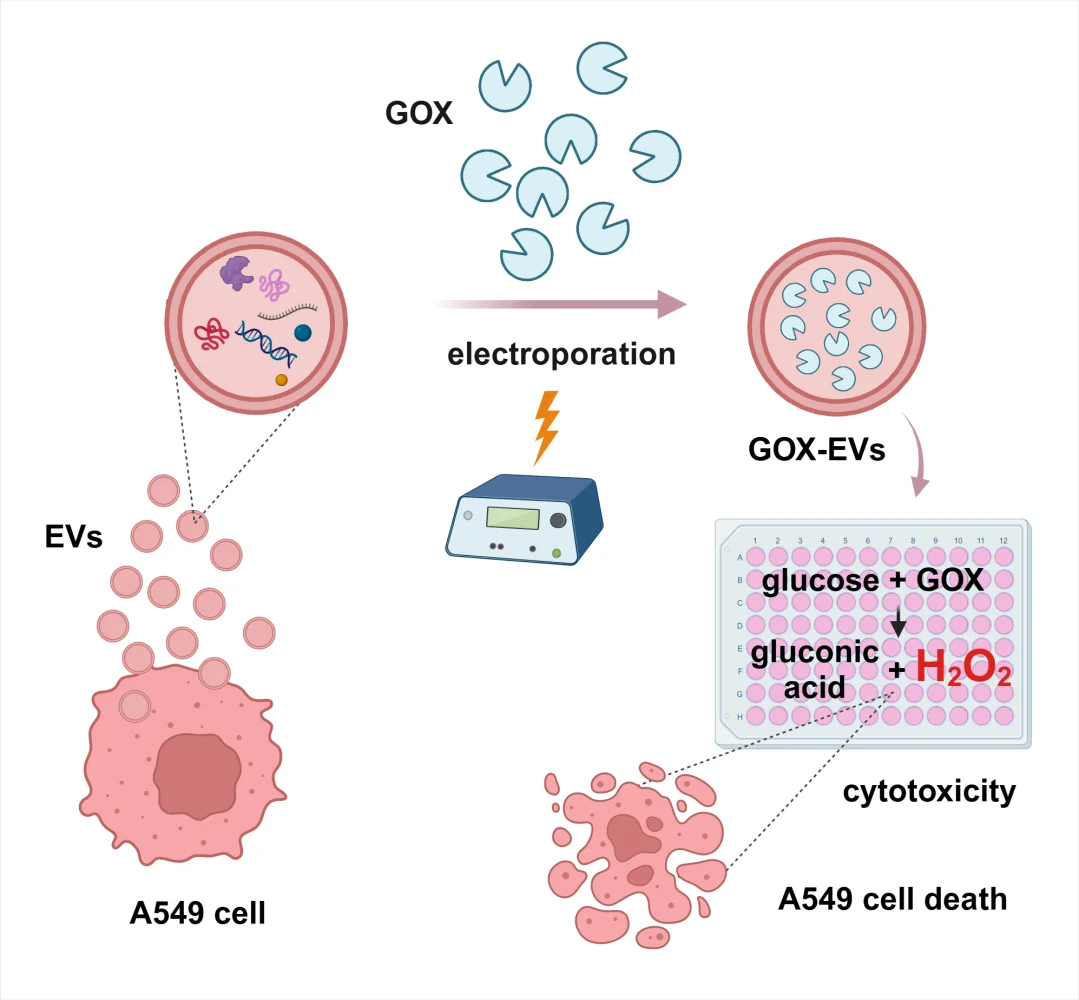
Lung cancer remains one of the leading causes of cancer-related mortality worldwide. Despite significant advancements in diagnosis and treatment, the prognosis for many patients remains poor, necessitating innovative approaches that can improve therapeutic efficacy and minimize adverse effects. In recent years, the field has seen an increasing interest in the use of extracellular vesicles (EVs), particularly as nanocarriers capable of delivering therapeutic agents directly to tumor cells. Among these, enzymatic cargo loading into EVs derived from lung cancer cells presents a promising strategy to revolutionize how we combat this formidable disease.
The Role of Extracellular Vesicles in Cancer Therapy
Extracellular vesicles are membrane-bound particles naturally released by cells that facilitate intercellular communication. They carry proteins, lipids, nucleic acids, and enzymes, reflecting the molecular makeup of their parent cells. Their inherent ability to transfer cargo with biological relevance makes them ideal candidates for drug delivery systems.
**Key advantages of EVs in cancer therapy include:**
- Biocompatibility and low immunogenicity: EVs are naturally occurring, reducing the likelihood of immune rejection.
- Targeted delivery: EVs can be engineered to target specific cell types, enhancing therapeutic precision.
- Protection of cargo: Enzymes or drugs loaded into EVs are shielded from degradation in the bloodstream, increasing stability and circulation time.
Given these benefits, researchers are exploring how to optimize EVs as carriers for enzymatic cargos, specifically in the context of lung cancer.
Enzymatic Cargo Loading: A Novel Therapeutic Approach
Loading enzymes directly into EVs derived from lung cancer cells holds particular promise. By harnessing enzymes’ catalytic capabilities, it becomes possible to modulate tumor microenvironments, activate prodrugs, or induce apoptosis selectively within tumor cells.
**What makes enzymatic cargo loading unique?**
– It allows for *specific biochemical reactions* to occur either within the tumor microenvironment or inside target cells.
– It minimizes systemic toxicity by confining enzymatic activity to the tumor site.
– It offers flexibility to deliver a variety of enzymes capable of degrading extracellular matrix components, neutralizing tumor-promoting factors, or activating prodrugs.
Research cited from Dove Medical Press highlights the technical process involved in loading enzymes into EVs derived specifically from lung cancer cells, opening avenues for tailored therapeutic strategies.
Technical Strategies for Loading Enzymes into EVs
Loading enzymatic cargos into EVs entails several innovative methodologies, each designed to maximize efficiency and preserve enzyme activity:
**Common techniques include:**
- Passive loading: Incubating EVs with purified enzymes allows spontaneous incorporation driven by concentration gradients.
- Electroporation: Applying electrical pulses temporarily permeabilizes EV membranes, enabling enzymes to enter.
- Genetic engineering of parent cells: Modifying lung cancer cells to overexpress enzymes ensures that EVs naturally carry enzymatic cargo during biogenesis.
- Sonication and extrusion: Mechanical disruption followed by reassembly coordinates the encapsulation process.
The recent research emphasizes the importance of maintaining enzyme activity throughout these processes. Ensuring that enzymatic structures remain functional post-loading is critical for therapeutic success.
Applications of Enzymatically Loaded EVs in Lung Cancer Treatment
The therapeutic potential of enzymatic cargo-loaded EVs in lung cancer can be appreciated through several innovative applications:
1. Enzymatic Activation of Prodrugs
Prodrugs are inactive compounds that require enzymatic conversion to become cytotoxic agents. Delivering enzymes capable of converting prodrugs directly into active drugs within tumor cells minimizes systemic exposure and adverse effects.
2. Microenvironment Modulation
Enzymes such as matrix metalloproteinases (MMPs) or hyaluronidases, delivered via EVs, can modify the tumor microenvironment, improving drug penetration and disrupting tumor-stromal interactions that promote growth and metastasis.
3. Inducing Apoptosis and Cell Death
Certain enzymes can trigger apoptosis pathways within cancer cells when delivered via EVs, providing a targeted approach to eliminate tumor cells without harming normal tissue.
Challenges and Future Perspectives
While the advantages are compelling, several challenges need addressing before enzymatic cargo-loaded EVs can be widely adopted clinically:
- Efficient loading methods: Developing techniques that maximize cargo load without compromising enzyme activity.
- Targeting specificity: Engineering EV surfaces for precise delivery to lung tumor cells, avoiding off-target effects.
- Scalability: Producing sufficient quantities of EVs with consistent quality for clinical applications.
- Regulatory hurdles: Establishing standards for the safety, potency, and stability of EV-based therapeutics.
Future research is poised to focus on integrating genetic modification techniques with advanced loading strategies and targeting ligands to overcome these hurdles.
Conclusion: A Promising Frontier in Lung Cancer Therapy
The loading of enzymatic cargos into extracellular vesicles derived from lung cancer cells symbolizes a significant leap toward precision medicine. This innovative approach offers the potential to enhance therapeutic efficacy, reduce systemic toxicity, and provide targeted treatment options tailored to individual patient profiles.
Continued research, including clinical trials and technological optimizations, will be essential to translate this promising concept into standard clinical practice. As our understanding of EV biology deepens, so too will our capacity to manipulate these natural nanocarriers for impactful cancer therapies.
**In summary:**
– Enzymatic cargo loading into EVs represents a cutting-edge strategy for lung cancer treatment.
– This method allows for highly targeted, stable, and effective delivery of therapeutic enzymes.
– Overcoming current technical and biological challenges will pave the way for next-generation cancer therapeutics.
For more updated news please keep visiting Prime News World.








